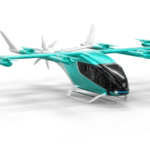Euroconsult’s latest Ground Segment Market Prospects reveals “promising trends” in the ground segment market from 2023 to 2032.
Euroconsult’s market intelligence predicts that non-geostationary (NGSO) constellation deployments will be a primary catalyst, leading to an increase by a 2.3 factor in the number of commercial user terminals by 2032, translating to a 8.7% Compound Annual Growth Rate (CAGR).
Flat Panel Antennas (FPA) also represent a massive growth area and will account for 74% of the sold commercial user terminals by 2032 compared to about 45% in 2022.
The report highlights how the commercial user terminal market is benefitting from robust growth across various verticals.
This expansion ranges from achieving universal broadband access to catering to the needs of mobility industries, enterprises, and government clients.
Market demand is encouraging the development of terminals that seamlessly switch between low Earth orbit (LEO), medium Earth orbit (MEO) and geostationary orbit (GEO), enhancing performance and resiliency
Ground segment market
Providers offering satellite-to-ground communication services, such as GSaaS, are enabling satellite operators to shift ground segment costs from capital expenditure (CAPEX) to operational expenditure (OPEX), mainly driven by Earth observation (EO) requirements.
It is particularly relevant for new operators testing their business models and aiming for progressive scaling. The Ground Station as a Service (GSaaS) market grew at an 11% CAGR during the last five years and is expected to continue expanding to reach $400 million by 2027.
“The dynamic evolution of the space segment, with flexible payloads and constellations, underscores the need for adaptable ground infrastructure to support advanced communication needs,” says Jean Benoit Laithier, Principal Advisor at Euroconsult.
“The development of software-defined solutions at both space and ground levels will remain a major driver for ground segment manufacturers. These solutions encompass virtual functions that optimize capacity utilization, reduce costs and enhance overall efficiency, including software-defined networking, virtualization and cloud technologies.”
Subscribe to the FINN weekly newsletter

